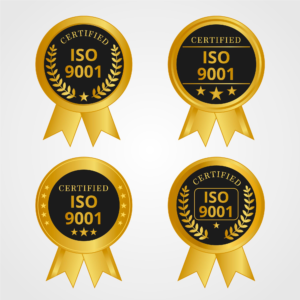
Should a nonprofit organization implement an ISO 9001:2015-compliant quality management system? What possible benefits may this choice have? What advantages might ISO 9001 provide for nonprofit organizations? And is certification of a nonprofit organization’s quality management system necessary? Due to the rise in non-governmental organizations (NGOs) over time, all of these things have come into question.
Heightened scrutiny from interested parties:
Since the 1980s, NGOs have multiplied quickly; according to the Public Interest Registry, there may already be 10 million of these organizations operating globally. The donors who fund these organizations may feel more uncertain about the efficient use of resources for their intended purpose and the ability to produce tangible results due to this exponential growth and the media’s widespread reporting of some of these organizations’ poor resource management practices.
The scrutiny from interested parties, including the general public, donors, and governments, grows along with the number of NGOs. By delivering messages that strive to convey purpose-led, effective, responsible, and cautious, NGOs hope to reduce donor uncertainty and set themselves apart. Let’s thus examine how to accomplish this using an ISO certification 9001 Quality Management System.
Benefits of implementing and certifying a QMS:
Adopting a quality management system and going the extra mile to obtain certification are voluntary actions that might imply confidence and trust that a company produces outcomes that align with its objective.
One of the most significant advantages of obtaining a Quality Management System certification is improving trustworthiness and image. Discover more about the advantages of implementing ISO 9001 in this article.
Creating overall performance indicators and using them as benchmarks for monitoring and improving performance by identifying underlying issues is required to implement a quality management system. Many NGOs struggle with ineffectiveness and underperformance. So, another advantage of putting a quality management system in place is creating a culture of continuous improvement.
Utilizing external requirements as a guide is another significant benefit of implementing a quality management system. This helps governments, funders, and recipients define the results to be provided and then monitor and assess the comments from those parties in search of chances for improvement. Such a method helps create opportunities to raise interested parties’ satisfaction with an NGO’s activity.
ISO 9001:2015 requires the use of the process approach. That means modeling how a nonprofit organization works as a set of interrelated and interacting activities performed by someone systematically. So, NGOs determine which processes contribute the most to desired outcomes.
When referring to written procedures, ISO 9001:2015 allows businesses not a lot of leeway. Creating procedures that are documented makes people reflect on their actions. They are more likely to spot inefficient methods and provide chances for improvement if they do this. The creation of written procedures is a crucial instrument for reducing process variability.
Conclusion: With the installation of a QMS, a nonprofit organization is encouraged to concentrate on long-term issues that are truly important while also evaluating daily operations and increasing efficiency by identifying and standardizing internal processes.



